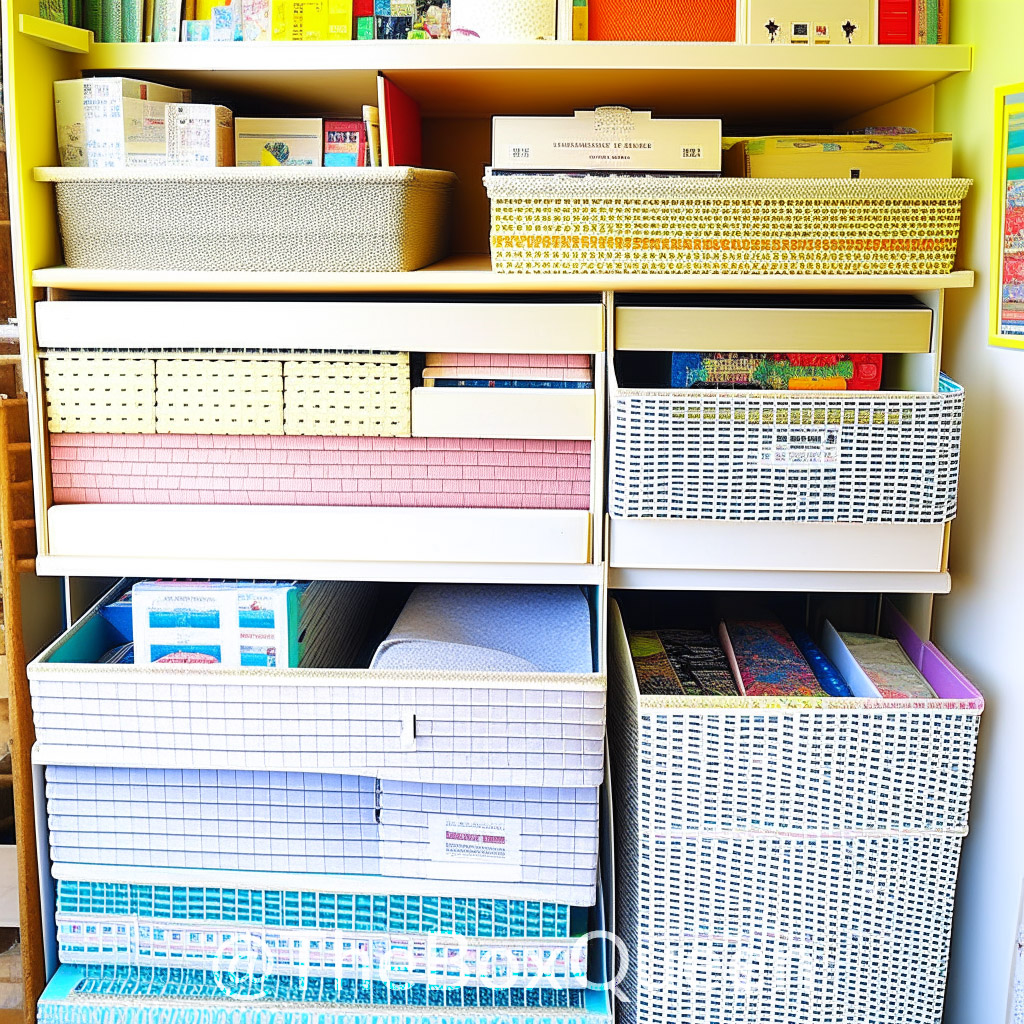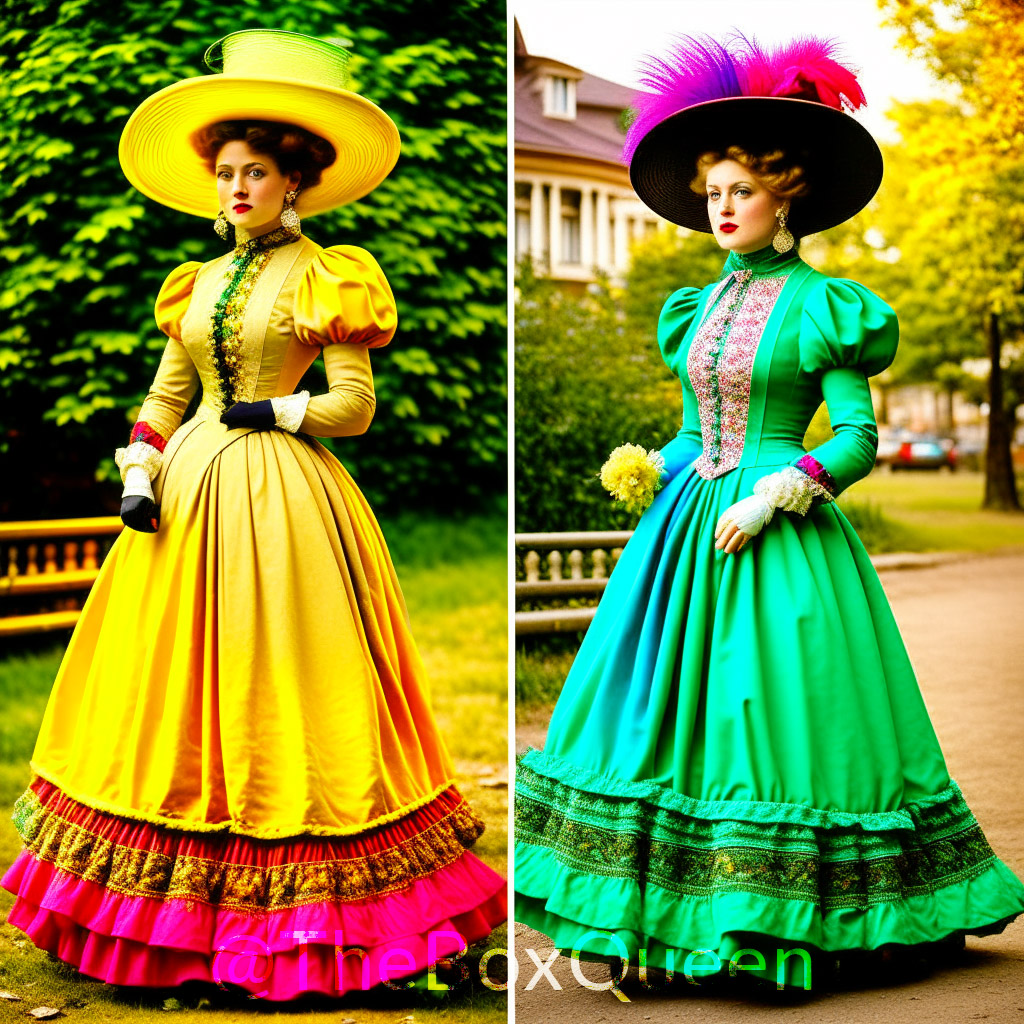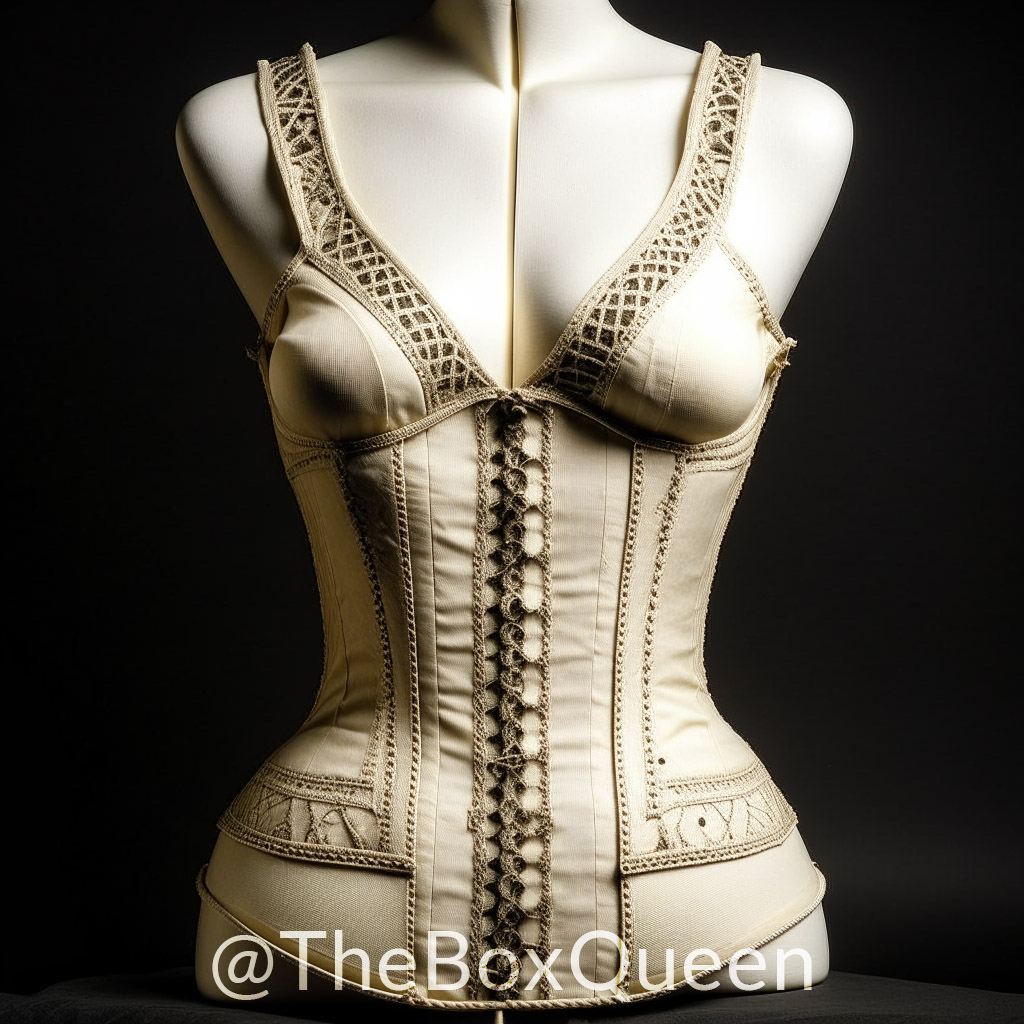1930s Clothing
Even though the 1930s were a difficult decade economically, fashion experienced a tremendous deal of originality and innovation throughout this period. As the globe was still recuperating from the Great Depression, the opulent and dazzling fashions of the 1920s gave way to a more functional and streamlined appearance. Particularly in women’s fashion, boxy coats, wide-legged pants, and shorter hemlines became in vogue, creating a more masculine profile. Double-breasted suits and fedora hats were standards in men’s fashion, which also exhibited a more fitted and refined appearance.
Hollywood, which produced films starring Marlene Dietrich and Greta Garbo, had a significant impact on fashion trends throughout this decade. In the 1930s, ready-to-wear apparel also gained popularity and became more widely available.
With retro fashions making a resurgence on the runway and in street style, the 1930s are still an inspiration for fashion designers and stylists today. 1930s apparel is a necessity in every fashion-forward collection because of the period’s elegant and timeless style.
Characteristics of 1930s Clothing
Luxury fabrics, impeccable tailoring, and a distinctive silhouette defined 1930s fashion. In the 1930s, opulent materials like silk, satin, and velvet were frequently used in clothing. In addition to daywear, these textiles were employed to make sophisticated and attractive evening wear. Another prominent feature of 1930s fashion was tailoring, which placed a high value on accuracy and a well-fitted appearance. This was demonstrated by the widespread usage of structured jackets, shirts, and bottoms, many of which had body-flattering cuts.
The silhouette of 1930s clothes was distinctive as well, with a focus on giving ladies a more streamlined and masculine appearance. Through the use of padded shoulders, corsets, and wasp waists, this incorporated a smaller waist and larger shoulders. Additionally, hemlines shrank, and knee- and tea-length dresses gained popularity.
The following are some examples of specific clothing pieces and fashions from the 1930s:
- The “little black dress” which was popularized by designer Coco Chanel, and considered a wardrobe staple.
- The bias-cut dress, which was a technique used to cut fabric on the diagonal, creating a slinky and fluid look.
- The “shantung” dress, a dress made of a rough silk fabric, often used in evening wear.
- The “peplum” jacket, a jacket or coat with a flared ruffle at the waist, which was popular for both day and evening wear.
- The “cloche” hat, a close-fitting hat worn low on the forehead, which was a popular accessory for women.
- The “zoot” suit, a style of suit worn by men with wide-legged, high-waisted trousers and a long coat.
All these clothing items and styles were iconic of the 1930s and are still widespread today. They are often seen as timeless and a great way to add a tinge of vintage glamour to any outfit.
Popular Trends of the Era
The 1930s was a decade of many fashion trends, some of the most popular trends of the era include:
-
The Bias Cut Dress:
The bias cut dress is a style that was made popular by Madeleine Vionnet, a fashion designer who cut fabric on the diagonal to make slinky, fluid gowns. Women of all ages wore bias-cut dresses, which were frequently regarded as a more cutting-edge and daring alternative to the conventional straight-cut dress. The bias cut dress was used for both daytime and evening events, and for extra elegance, it was frequently worn with a fur stole or a string of pearls.
-
The Zoot Suit:
The trend was a style that featured long coats, wide-legged, high-waisted pants, and was popular among men. The young and stylish wore zoot suits, which were frequently linked with the African American and Latino cultures since they were worn by jazz musicians and dancers. The zoot suit was a daring and showy fashion choice that was frequently paired with a fedora hat.
-
The Sweater Girl Look:
This style was typified by a voluminous, knee-length skirt paired with a tight-fitting sweater. Movie stars like Lana Turner helped popularise the sweater girl image, which was viewed as a more relaxed and youthful alternative to the more formal trends of the 1930s. For young professional women and college students, the sweater girl look was a popular choice that was frequently accessorised with a pearl necklace.
-
The Hollywood Glamour:
As Hollywood films became more popular, actresses like Greta Garbo, Marlene Dietrich, Joan Crawford, and Jean Harlow rose to fame as fashion icons, and their looks were heavily replicated. Luxurious fabrics, chic evening clothing, the usage of fur, pearls, and other pricey accessories were the hallmarks of Hollywood Glamour.
All of these styles were popular and famous throughout the 1930s and are remain fashionable now. They are frequently regarded as classics and a terrific way to infuse any ensemble with a touch of retro glitz.
The Evolution of 1930s Clothing
The Great Depression’s economic troubles and the Hollywood film industry had a major impact on fashion during the 1930s. As a result, fashions changed to be less ostentatious and more functional. Women’s daytime clothing featured straightforward, fitted looks that prioritized practicality over fashion. To save fabric, sleeves grew longer and hemlines were lowered to the knee.
Dresses with beading and sequins became more common, bringing back the glitzy, 1920s-inspired style for evening attire. The bias cut gained popularity because it allowed for a more fluid and natural draping of the fabric.
The 1930s saw a revival of the conventional, tailored appearance in men’s fashion. It was common to wear double-breasted suits, fedoras, and wingtip shoes. Young, urban African American and Latino males adopted the zoot suit, a design distinguished by a long jacket and high-waisted, wide-legged pants that was linked to jazz music and the burgeoning swing dancing subculture.
In general, the 1930s era’s fashion was a reflection of the social and economic developments taking place at the period. The clothes had a focus on everyday wear and were functional, but they also had some glitzy evening dress.

1930s Clothing Today
Fashion designers and brands in the present day are still inspired by the 1930s. The decade’s emphasis on wearable, functional clothing and its sleek, fitted appearance are still relevant today.
Ralph Lauren is one instance of a modern designer who is inspired by the 1930s. His collections frequently include items with a vintage, 1930s-inspired look, such fedora hats, wide-legged slacks, and double-breasted suits.
Miuccia Prada is another example; her collections frequently have a retro vibe and are known to include tailored garments like jackets, coats, and blouses that are reminiscent of the style of the 1930s.
The Great Gatsby Collection and Downton Abbey are just two examples of the many vintage-inspired companies that have drawn inspiration from the decade’s fashion. Customers also like to buy clothing and accessories with a vintage feel, such as fedora hats and skirts with beadwork and sequins.
In conclusion, the emphasis on practical, utilitarian clothing and the exquisite, fitted look of the 1930s continue to have an impact on fashion today. The 1930s continue to serve as a source of inspiration for many modern designers and firms, and consumers continue to choose vintage-inspired clothes and accessories.
The Great Depression and its Impact on Fashion
The fashion business was significantly impacted by the Great Depression, which started in 1929. Since many people could no longer afford to buy designer goods, the fashion industry had to change to reflect this new situation. As a result, ready-to-wear, reasonably priced apparel received more attention in 1930s fashion illustrations.
With darker hues and fewer frivolous elements, fashion illustrations from the 1930s also mirrored the more depressing atmosphere of the period. The bright and glitzy fashion illustrations of the 1920s stood in stark contrast to this.
Hollywood’s Ascent and How It Affects Fashion Illustrations
As Hollywood grew, fashion illustrators started to concentrate more on the glitzy, Hollywood-inspired looks worn by movie stars. These artworks frequently have slick, elegant layouts and vivid, strong colours.
As more and more women tried to imitate the looks of their favorite movie stars, this trend was also seen in the fashion business. Many fashion illustrators of the time saw their careers flourish as a result of the widespread acceptance of Hollywood-style fashion graphics.
The Impact of 1930s Fashion Illustrations on Today’s Fashion Industry
The fashion business of today is still influenced by the fashion illustrations of the 1930s. The elegant, sophisticated style of the Hollywood-inspired illustrations from the 1930s served as inspiration for a number of contemporary fashion designers and artists.
The emphasis on inexpensive, ready-to-wear clothing in fashion images from the 1930s has also influenced the fashion business today, with many designers and retailers now providing more budget-friendly options for customers.
The 1930s were a decade marked by change and adaptation for fashion illustrations, and the effects of these changes may still be seen in the modern fashion industry. The fashion illustrations of the 1930s continue to inspire and have an impact on the fashion industry today, from the melancholy and affordable designs of the Great Depression to the dazzling Hollywood-inspired fashions.
How to Incorporate 1930s Clothing into Your Wardrobe
A sleek, refined look that was popular in the 1930s was distinguished by clear lines, well-defined silhouettes, and exquisite detailing. Take into account the following advice to incorporate features of this decade into your wardrobe:
Invest in a well-fitting suit or blazer. Menswear throughout the 1930s was distinguished by its focus on tailoring and sharp, simple lines. A well-fitted suit or blazer may give any ensemble a hint of refinement from the 1930s.
Look for clothing with Art Deco details. Geometric patterns and strong, graphic motifs are characteristics of the Art Deco movement, which began in the 1920s and reached its height of popularity in the 1930s. To give your outfit a 1930s feel, seek for clothing and accessories that incorporate these characteristics.
Try out some bright prints. Bright and lively prints and patterns were popular during the 1930s. To give your clothing a hint of 1930s style, play around with prints like polka dots, stripes, and floral motifs.
Incorporate vintage-inspired accessories. Fedoras, beaded necklaces, and delicate earrings are just a few examples of accessories that can give your outfit a hint of 1930s elegance.
Play with texture. Clothing from the 1930s was frequently crafted from pricey materials like silk, satin, and velvet. By incorporating these textures into your outfit, you can give your appearance a hint of glitzy 1930s style.
Examples of styling:
- High-wasted pants, a silk shirt, and a tailored blazer are all combined. Vintage-inspired heels and a beaded necklace complete the look.
- A flowing flowery dress with stiletto heels, a beaded clutch, and other accessories.
- With a pair of delicate earrings and a hair item with a vintage feel, the outfit is completed with a polka dot shirt tucked into a high-waisted skirt.
- Combining a current, streetwear-inspired ensemble with a vintage-inspired shirt or dress. A fitted shirt with high-waisted jeans and ankle boots or a beaded or sequined dress with a denim jacket and shoes can accomplish this.
- Putting on a double-breasted suit with a thin fit and matching a trendy button-up shirt and tie.
- Adding 1930s-inspired accessories, such a fedora hat or wing-tip shoes, to a contemporary outfit to provide a hint of retro style.
- Putting on a tailored dress, gloves, and hat to complete the look of the 1930s for a themed party or special occasion.
- Putting on antique-inspired clothing and accessories for a vintage picture session or just for a little nostalgia
Overall, styling clothing with 1930s influences for modern fashion is all about striking the correct balance between old and modern components and making it appear wearable, relevant, and effortless.



